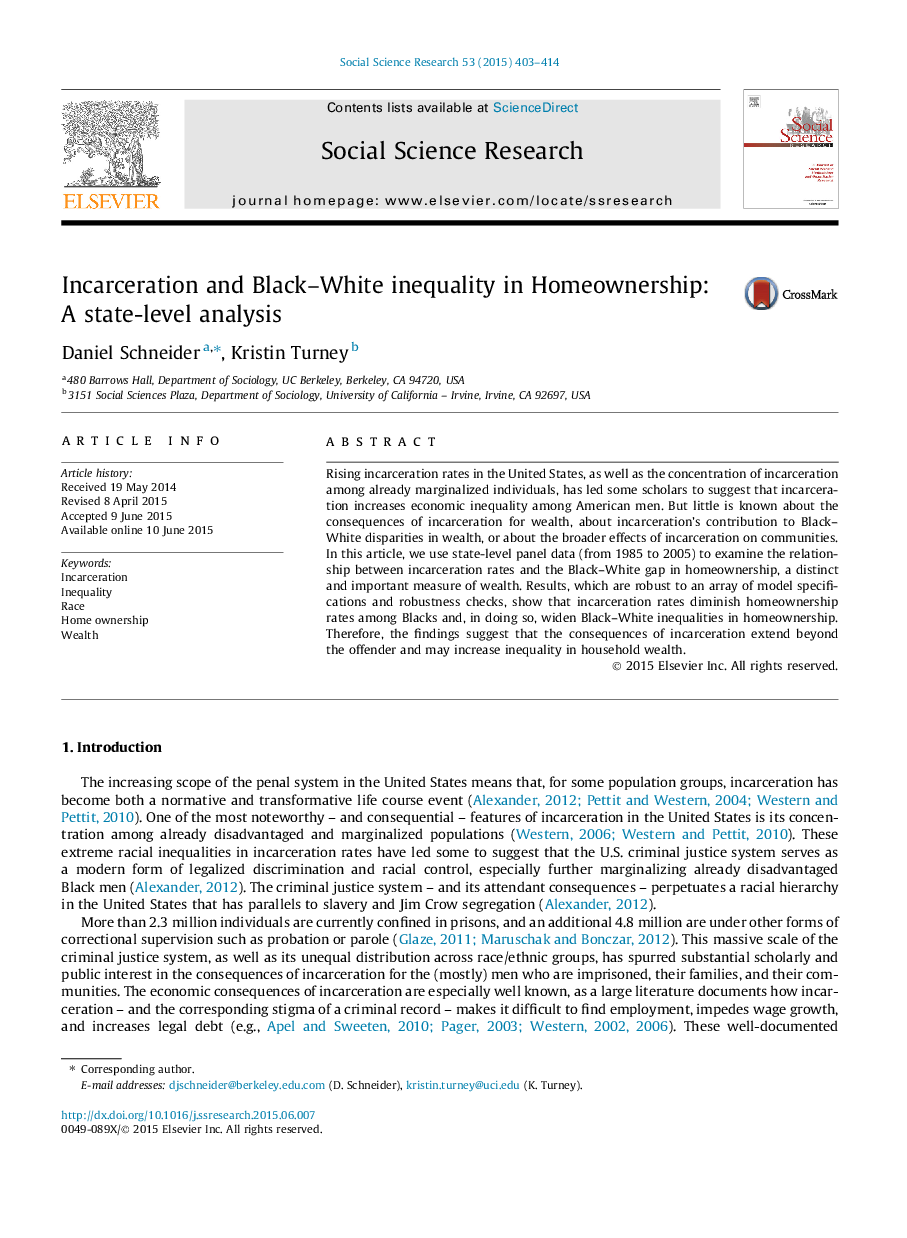| Article ID | Journal | Published Year | Pages | File Type |
|---|---|---|---|---|
| 955680 | Social Science Research | 2015 | 12 Pages |
•Examines the effect of state-level incarceration rates on homeownership.•Employs state-level panel data with state and year fixed effects.•Finds evidence that higher rates of incarceration reduce Black homeownership.•Shows that higher rates of incarceration widen the Black–White homeownership gap.
Rising incarceration rates in the United States, as well as the concentration of incarceration among already marginalized individuals, has led some scholars to suggest that incarceration increases economic inequality among American men. But little is known about the consequences of incarceration for wealth, about incarceration’s contribution to Black–White disparities in wealth, or about the broader effects of incarceration on communities. In this article, we use state-level panel data (from 1985 to 2005) to examine the relationship between incarceration rates and the Black–White gap in homeownership, a distinct and important measure of wealth. Results, which are robust to an array of model specifications and robustness checks, show that incarceration rates diminish homeownership rates among Blacks and, in doing so, widen Black–White inequalities in homeownership. Therefore, the findings suggest that the consequences of incarceration extend beyond the offender and may increase inequality in household wealth.
